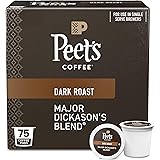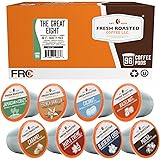Unlock Superior Flavor: Free Ways to Improve Your Coffee Quality at Home
You can significantly **improve your coffee for free** by focusing on overlooked details right in your own kitchen. While many coffee enthusiasts consider expensive equipment or rare beans essential, the truth is that a few simple, no-cost steps can dramatically elevate your daily brew. The video above highlights some excellent, practical methods, and we’re here to dive deeper into why these techniques work and how you can implement them effortlessly.
Imagine if your seemingly perfect coffee beans were actually hiding flavor defects that detract from your cup. Even top-tier roasters and producers can’t catch every single imperfection. These hidden flaws can introduce unpleasant tastes, dulling the vibrant notes you expect from quality coffee. Fortunately, with a keen eye and a few extra moments, you can easily remove many of these problematic beans and elements, ensuring a cleaner, more delicious experience.
Mastering Coffee Bean Sorting: The Key to Purity
The first crucial step to enhancing your coffee quality is diligent bean sorting. This process involves visually inspecting your roasted coffee beans for any anomalies that could negatively impact flavor. It might sound tedious, but even a quick pass can make a world of difference. Here’s a breakdown of what to look for:
1. Identify and Remove Quakers: The Underdeveloped Bean
Quakers are arguably one of the most significant flavor destroyers in your coffee. These are underdeveloped coffee seeds that fail to react properly during the roasting process, often remaining lighter in color than their properly roasted counterparts. Their light hue is a tell-tale sign of their unroasted interior.
-
What they are: Quakers are immature beans that didn’t fully develop on the coffee cherry. When roasted, they don’t caramelize or brown like mature beans due to their different chemical composition.
-
Taste Impact: As the video mentions, Quakers can impart undesirable flavors reminiscent of oats, cardboard, or stale bread. Even a single Quaker can introduce a noticeable sourness or lack of sweetness, throwing off the entire cup’s balance. Imagine brewing a carefully selected single-origin coffee, only for it to taste flat and bready because of a few rogue Quakers.
-
How to Spot Them: Look for beans that are noticeably lighter in color – often blonde, pale yellow, or greenish-brown – compared to the rich, consistent brown of correctly roasted beans. They stand out. The video specifically highlights naturally processed Ethiopian coffees as being more prone to Quakers, though they can appear in any origin.
-
Sorting Technique: Simply spread your dose of whole beans on a clean, light-colored surface. A small plate or even the palm of your hand works well. Under good light, scan for any unusually light beans and pick them out. Don’t confuse them with silver skin fragments, which can be easily brushed off.
2. Eliminating Roast Defects and Deformed Beans
Beyond Quakers, other defects from the roasting process or inherent bean abnormalities can also compromise your coffee’s flavor. These indicate uneven heat application or poor bean quality from the start.
-
Scorched and Tipped Beans: These are beans that have been subjected to excessively high heat too quickly, causing surface charring. Scorching appears as dark, burnt spots on the bean’s flat side, while tipping affects the ends or tips. Both introduce an acrid, bitter, or charred taste to your coffee. Imagine a perfectly roasted batch tainted by the harsh, burnt notes from just a few scorched beans.
-
Hollowed or Cracked Beans: Beans with massive cracks, craters, or hollowed-out centers indicate structural weaknesses or rapid, uneven drying during processing. These structural issues can lead to unpredictable roasting, where parts of the bean roast much faster or slower than the rest. Such beans often contribute inconsistent flavors, lacking sweetness or developing an off-taste due to their irregular density.
-
Other Deformed Beans: Keep an eye out for unusually small, shriveled, or extremely misshapen beans. While peaberries (a single, rounded seed inside the coffee cherry instead of two flat ones) are often considered desirable for their perceived sweetness, other truly deformed or damaged beans should be removed. As demonstrated in the video, if a bean looks “funky” or unrecognizable, it’s best to err on the side of caution and remove it.
-
Sorting Technique: After removing Quakers, continue to scan your dose for any beans that look abnormally dark, have obvious char marks, deep cracks, or unusual shapes. Pull these out. The goal isn’t perfection but removing the obvious culprits that can significantly impact taste.
The Impact of Chaff on Coffee Flavor
The next critical step in your free coffee improvement journey involves removing chaff, also known as silver skin. Chaff is the papery layer that surrounds the coffee bean and detaches during the roasting process. While most chaff is removed during commercial roasting, some bits inevitably cling to the beans.
3. Why Remove Chaff? Unpleasant Tastes
The video provides a compelling demonstration of chaff’s negative impact on flavor. When brewed, chaff imparts distinctly undesirable characteristics to your coffee. It might seem insignificant, but its presence can surprisingly alter your entire cup.
-
Taste Profile: As shown in the cupping experiment with Hugo, and further emphasized by the main speaker’s tasting of pure chaff, it contributes a dry, papery, bitter, and sometimes even tobacco-like or “fishy green tea” note. Imagine expecting bright, fruity notes from your coffee, only to find them muted by a pervasive dryness and bitterness. This is chaff at work.
-
Aroma and Mouthfeel: Chaff can also affect the aroma, introducing a less clean scent, and the mouthfeel, making the coffee feel lighter or thinner than desired. It essentially acts as a filler, diluting the true coffee flavor with its own unpleasant profile.
-
Visibility: Chaff is very light and often appears as fine, flaky, silvery or brownish bits clinging to the creases of the beans or loosely mixed with them. It becomes even more apparent after grinding.
4. Simple Techniques for Chaff Removal
Removing chaff is remarkably easy and requires no special tools. It leverages the lightness of the chaff compared to the heavier coffee grounds. The main speaker outlines two practical methods:
-
Pre-Grind Removal (for whole beans): Before grinding, you can gently blow over your dose of whole beans. The lighter chaff will often separate and fly off. You can also lightly shake your dosing cup under a light; any loose chaff should be visible and can be flicked away.
-
Post-Grind Removal (for ground coffee): This is arguably the most effective method, especially for filter coffee. Grind your beans into your dosing cup or a small container. Then, simply blow gently into the cup. The fine, lightweight chaff will be easily blown out, leaving the heavier coffee grounds behind. The video notes that for espresso, the impact of chaff is less noticeable due to the higher concentration, but for filter coffee, where strength is lower, the difference is profound. Imagine a clearer, sweeter pour-over because you took an extra 10 seconds to blow away the chaff.
-
Double Grinding (for maximum effect): While not an everyday recommendation due to the extra effort, double grinding can release even more embedded silver skin. Grind your beans coarsely first, remove the chaff, then grind them a second time to your desired fineness. This method is more exhaustive and yields the cleanest possible grounds.
The Payoff: A Significantly Improved Cup
Incorporating these simple, free steps into your coffee routine can lead to a noticeably better cup. By removing Quakers, roast defects, and chaff, you are effectively eliminating elements that introduce bitterness, dryness, sourness, and other off-flavors. This purification process allows the inherent sweetness, acidity, and complex flavor notes of your quality coffee to shine through unhindered.
While this process involves a small investment of your time, the reward is a cleaner, sweeter, and more enjoyable brew. You are not just making coffee; you are crafting a more refined experience. Give these free techniques a try, and taste the profound difference in your daily cup. You’ll be surprised how much you can **improve your coffee for free** with just a little effort and attention to detail.







